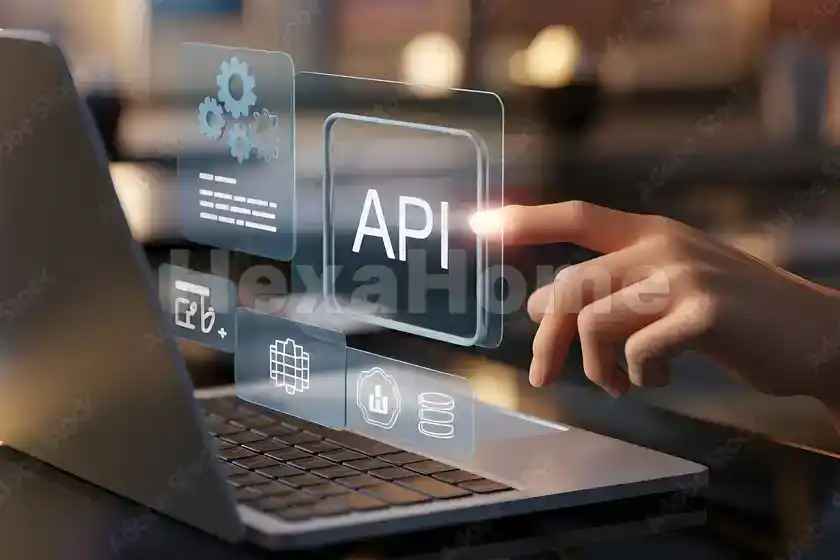Understanding GraphQL: A Modern Approach to API Development
Updated on : 04 December, 2024, 10:30 AM IST

Image Source: Adobe Stock
Table Of Contents
In the ever-evolving landscape of web development, GraphQL has emerged as a powerful alternative to traditional REST APIs. Developed by Facebook in 2012 and released as an open-source project in 2015, GraphQL offers a flexible and efficient way to query and manipulate data. This blog post will explore what GraphQL is, its key features, advantages over REST, use cases, and potential challenges.
What is GraphQL?
GraphQL is a query language for APIs and a runtime for executing those queries with your existing data. Unlike REST, which exposes multiple endpoints for different resources, GraphQL operates through a single endpoint. This allows clients to request exactly the data they need in a structured format, reducing the amount of data transferred over the network and improving performance.
At its core, GraphQL consists of three main components:
- Schema: The schema defines the types of data that can be queried and the relationships between them. It serves as a contract between the client and server, ensuring that both sides understand the structure of the data exchanged.
- Queries: These are requests made by the client to fetch specific data from the server. Clients can specify exactly what fields they need, allowing for more efficient data retrieval.
- Resolvers: Resolvers are functions that handle incoming queries and return the requested data. They define how to fetch or compute the data specified in a query..
Key Features of GraphQL
GraphQL's design introduces several key features that enhance its functionality:
- Single Endpoint: All requests are sent to a single endpoint, simplifying API management and reducing complexity.
- Strongly Typed Schema: The schema enforces type safety, allowing developers to catch errors early in the development process. This also makes APIs self-documenting.
- Hierarchical Queries: Clients can request nested resources in a single query, reducing the number of network requests needed to fetch related data.
- Real-time Capabilities: Through subscriptions, GraphQL can provide real-time updates to clients whenever data changes on the server.
Advantages of GraphQL Over REST
GraphQL offers several advantages compared to traditional REST APIs:
- Efficient Data Fetching: Clients can request only the data they need, eliminating issues of over-fetching (receiving more data than necessary) and under-fetching (having to make multiple requests to gather related information). For example, if an application needs user details along with their recent posts, a single GraphQL query can retrieve all this information at once:
GraphQL
{
user(id: 1) {
name
email
posts {
title
content
}
}
}This contrasts with REST, where separate endpoints would be required for users and their posts.
- Flexibility: Developers can easily evolve their APIs without breaking existing clients by adding new fields or types to the schema. This flexibility is crucial in modern applications that require rapid iteration.
- Improved Performance: By minimizing the amount of data transferred over the network and reducing latency through fewer requests, GraphQL can significantly enhance application performance.
- Strong Typing: The strongly typed nature of GraphQL schemas ensures that clients receive predictable responses. This predictability aids in debugging and enhances developer productivity.
- Better Developer Experience: Tools like GraphiQL allow developers to explore APIs interactively, making it easier to understand available queries and mutations.
Use Cases for GraphQL

Image Source: Adobe Stock
GraphQL is particularly well-suited for various applications:
- Mobile Applications: Mobile apps benefit from reduced loading times and improved performance due to efficient data fetching capabilities.
- Real-time Dashboards: Applications that require real-time updates can leverage GraphQL subscriptions to provide users with instant feedback as data changes.
- E-commerce Platforms: E-commerce sites can utilize GraphQL to fetch product details along with related categories and reviews in one request, enhancing user experience during browsing.
- Microservices Architecture: In microservices environments, GraphQL serves as an aggregation layer that simplifies interactions between services while providing a unified API for clients..
Challenges of Using GraphQL
Despite its many advantages, adopting GraphQL comes with certain challenges:
- Complexity in Implementation: Setting up a GraphQL server requires careful planning and design of the schema and resolvers. This initial complexity may deter some teams from adopting it.
- Caching Difficulties: Caching responses can be more challenging with GraphQL due to its single endpoint nature. Traditional caching mechanisms used in REST may not apply directly.
- Over-fetching Risks: While GraphQL aims to reduce over-fetching by allowing clients to specify fields, poorly designed queries can still lead to excessive data retrieval if not managed properly.
- Security Concerns: The flexibility of querying in GraphQL can expose sensitive data if proper authorization checks are not implemented at every level of the resolver functions.
Conclusion
GraphQL represents a significant advancement in how developers build APIs. By allowing clients to request precisely the data they need through a single endpoint, it enhances efficiency and flexibility while reducing complexity in API interactions. As more organizations recognize its benefits—especially for mobile applications and real-time services—GraphQL is likely to continue gaining traction as a preferred choice for modern API development.
In summary, while transitioning from REST to GraphQL may involve some initial hurdles, the long-term benefits of improved performance, developer experience, and flexibility make it an attractive option for many projects. As you consider your next API design or development project, exploring how GraphQL can fit into your architecture could lead to significant improvements in both user experience and developer productivity.


